Last Updated on: 20th December 2024, 01:10 pm
It may lack the coastline of Batumi or the nightlife of Tbilisi, but Kutaisi, Georgia’s third-largest city, is worth checking out. What makes the city unique is the variety of things one can do in a single weekend. Within a couple of days, you can explore classical architecture in the city center, visit centuries-old monasteries and see caves formed millions of years ago. The following Kutaisi guide will cover it all.
What’s not included here are popular natural sites like the Okatse or Martvili Canyons, which would take an additional day to see. I opted for the caves instead, while on the other days of my stay, I made day trips to the abandoned spa town of Tskaltubo and Chiatura. Both the caves and canyons can be reached with affordable day tours, which you learn more about below.
In this Kutaisi guide, we’ll start with things to see in the city center before covering other attractions in the wider Imereti area.
The Colchis Fountain
Located in the center of Agmashenebeli Square, just next to Kutaisi Park, is the Colchis Fountain. Since it was added in 2011, it’s become a symbol of Kutaisi – both modern and ancient. The ancient Kingdom of Colchis, of which Kutaisi was once part, existed from the 13th–1st centuries BC.
While Kutaisi is located inland, the kingdom was largely spread out along the Black Sea coast, also encompassing parts of modern-day Turkey and Russia.
Colchis was a prosperous and influential kingdom in its time, but today it’s largely known for its part in the Greek legend of Jason and the Argonauts.
According to story, Jason, nephew of the king Pelias, was ordered by his uncle to bring back the Golden Fleece from the land of Colchis. Jason assembled a crew, the likes of which included Heracles and Orpheus, on his ship named the Argo. As such, the crew of about 50 or so became known as the Argonauts.


Overcoming many obstacles during their travels across the Black Sea, the crew eventually arrived in Colchis. Luckily, the Colchian king Aetes agreed to grant Jason the Golden Fleece. But he first needed to defeat a variety of dangerous guardian beings that were protecting it.
Fortunately for Jason, he was aided by Aetes’s daughter, Medea, and successfully accomplished his mission.
While the fleece likely symbolizes the qualities of heroism and kingship, the ancient Colchians were indeed known for their method of collecting small pieces of gold from the river using sheep fleeces.
As for the fountain? While there’s no direct correlation with the popular myth, the animal statues are based on gold jewelry found at the archaeological site of Vani that were produced during the Colchian heyday.
Central Kutaisi Architecture
Not far from the Colchis Fountain, you can find numerous interesting buildings around the city center. Just across the street from the fountain is the Meskhishvili Theatre, an attractive circular building which dates back to 1861. Capable of seating over 800 people, it still regularly hosts performances.
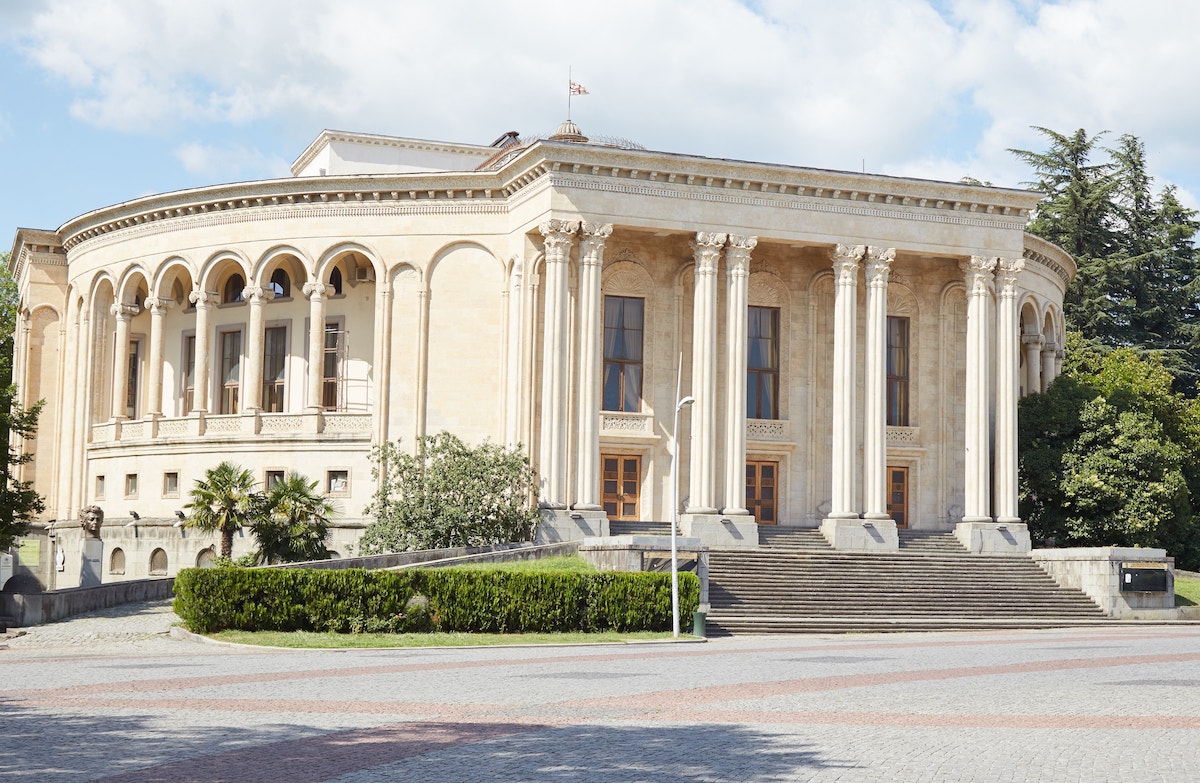
A short walk away is the Kutaisi Synagogue, built in 1885. Another interesting religious monument in the city center is the Kutaisi Holy Annunciation Church, a unique (for Georgia) Baroque-style church. Modeled after a church in St. Petersburg, this building also dates back to the 19th century.
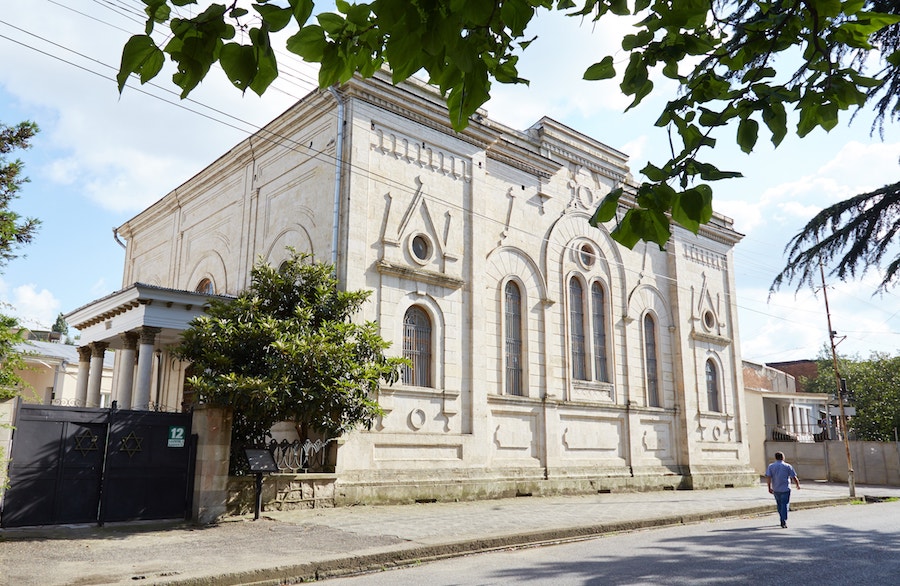


While only visible from a distance, you can also go and check out a building known as the Golden Marquee, one of the country’s oldest secular buildings. Built in the 1600s, it’s a small part of the royal palace of a former Imeretian King.
The building happens to be just next to a cable car station that takes people up to a scenic viewpoint atop a mountain. But as it was closed during my visit, I never got to see what it was about.


During your wanderings around town, you can also enjoy some nice views of traditional-style houses along the Rioni River. And don’t miss the funky Soviet-era facade of the Kutaisi Market entrance near the Red Bridge!
Kutaisi State Historical Museum
While relatively small, the Kutaisi State Historical Museum is worth a quick stop during your explorations of the city. On display are artifacts dating from the Palaeolithic era to the 20th century.
But the real highlights are the artifacts from the Bronze Age as well as Georgia’s medieval ‘golden age.’ Some of the items on display come from Gelati Cathedral, featured further down below in this Kutaisi guide.
Entry to the museum costs just a few GEL and it shouldn’t take more than a half-hour to explore.

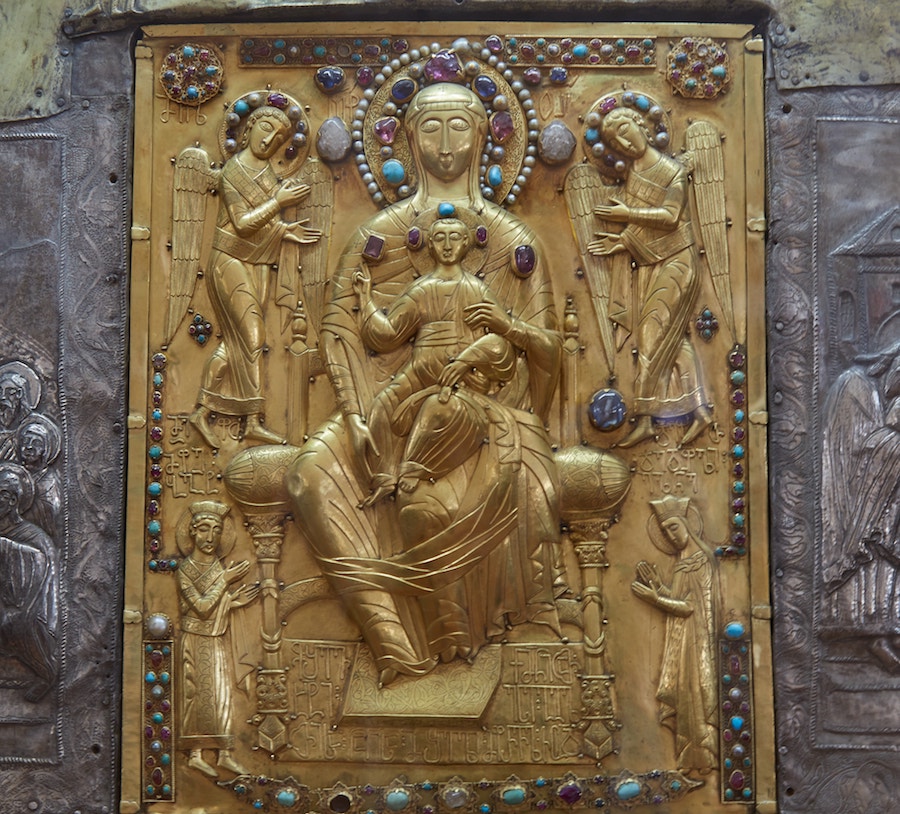
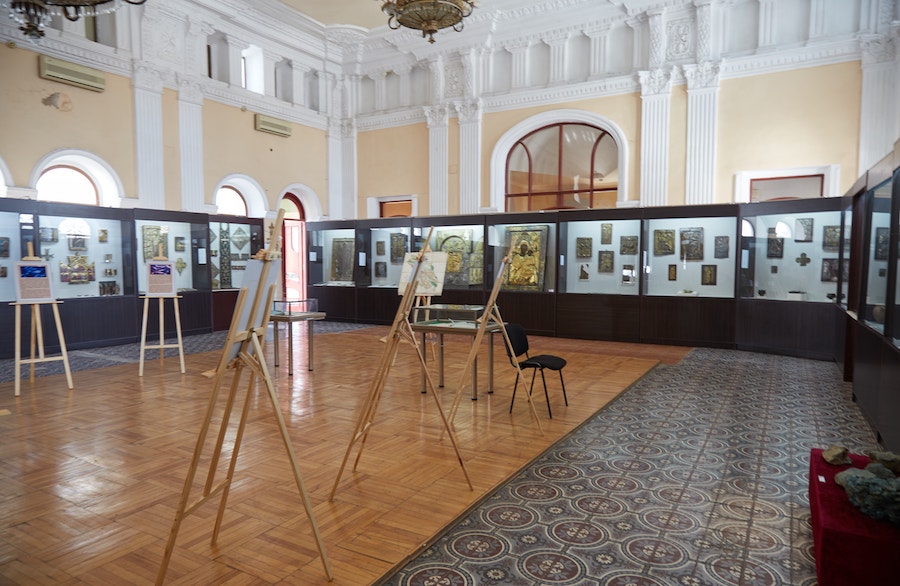
Kutaisi Botanical Garden
Located north of the city center on the opposite side of the Rioni River, the Botanical Garden is a relatively easy walk from Bagrati Cathedral (see below).
The garden dates back to the 19th century and is home to over 700 species of plants. It can’t compare, however, with Tbilisi’s garden, and certainly not with Batumi’s, by far the country’s best.
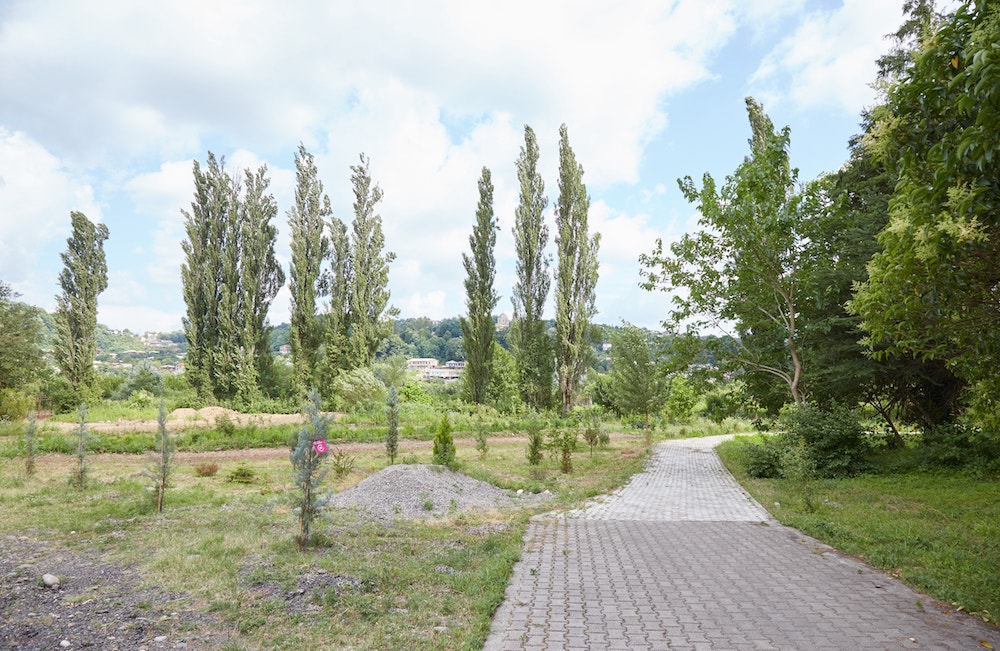
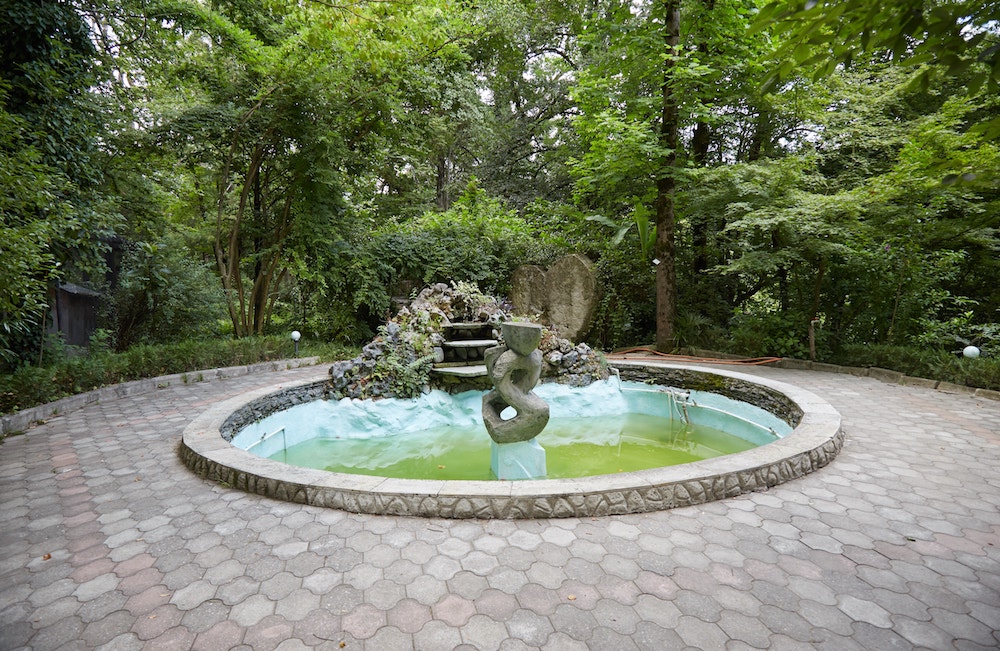
But if you have the time, the Kutaisi Botanical Garden is worth a quick visit, namely for one particularly unique landmark. It’s a small church full of ikons that somebody made inside of a tree! Even in a country with as many churches as Georgia, this isn’t something you see every day.

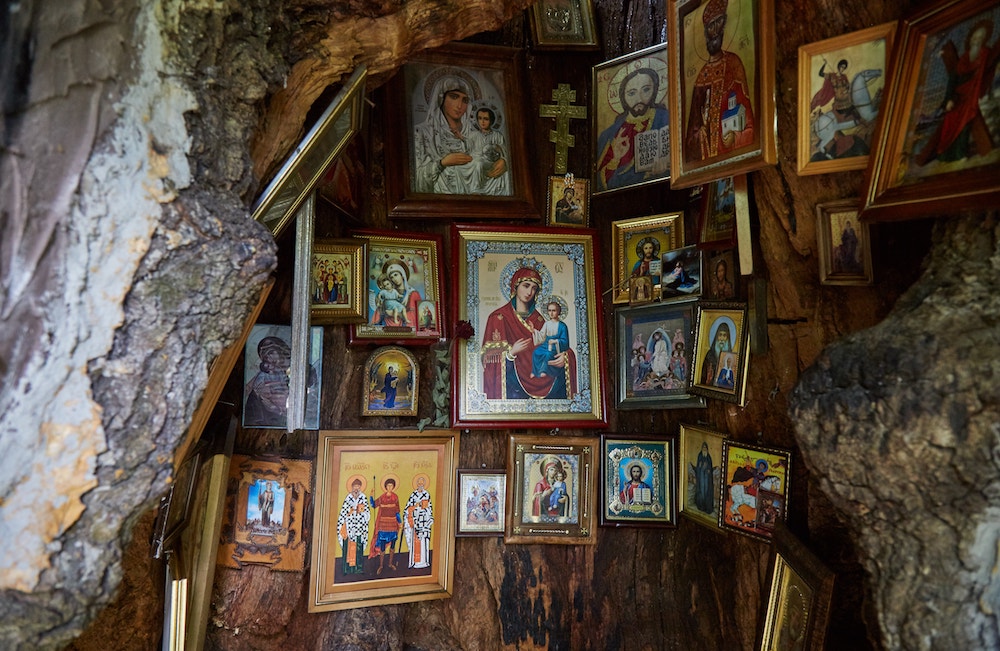
Bagrati Cathedral
Bagrati Cathedral, situated atop a hill overlooking the city center, is easily one of the Imereti region’s most impressive cathedrals. The former UNESCO World Heritage Site (more on that later) was built in the 11th century during the reign of King Bagrat III.
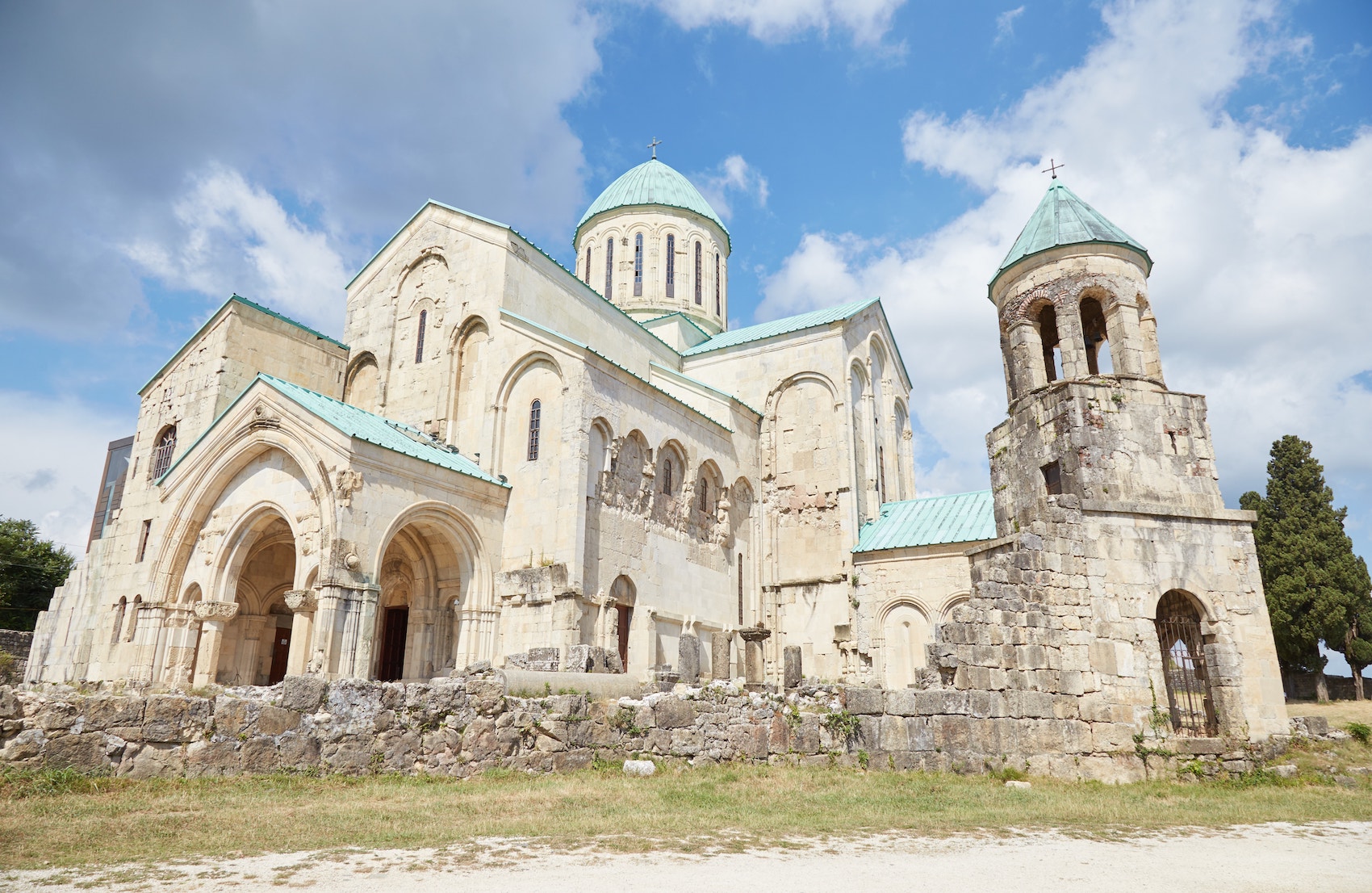
This era is now widely considered by historians to be medieval Georgia’s golden age.
But there’s been a church at the spot since at least the 4th century, while even prior to that, the hill was used as a fortress. The Ukimerioni Hill has always offered a strategic vantage point, and you can go and admire it before stepping inside the cathedral.

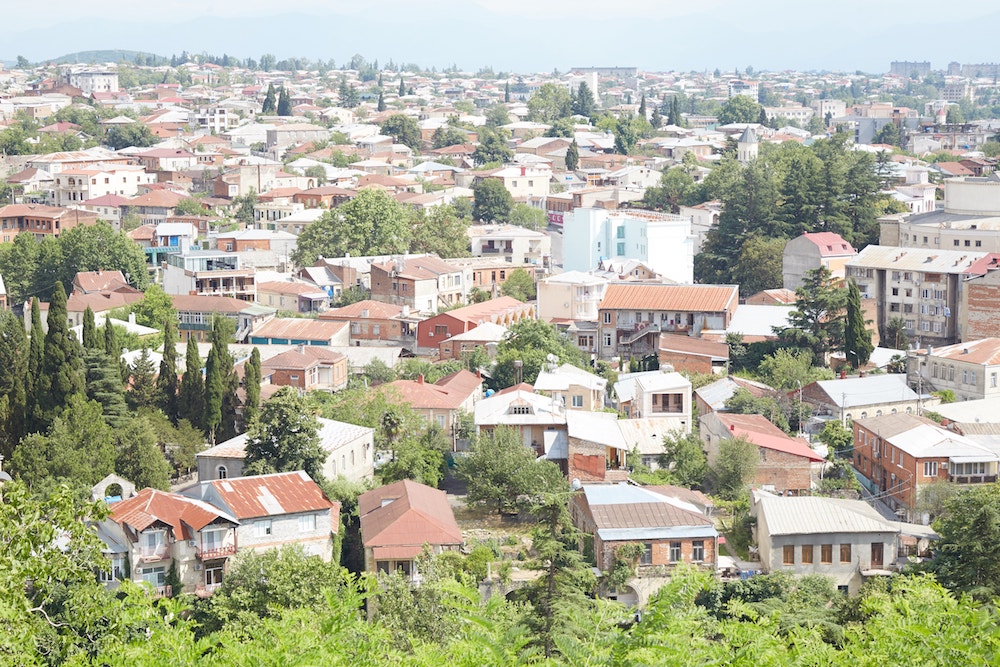
Bagrati’s interior lacks reliefs, though it does contain some beautiful ikons. The interior, with its tall central dome, appears well-preserved. That is until you take another look at some of the columns by the entrance.
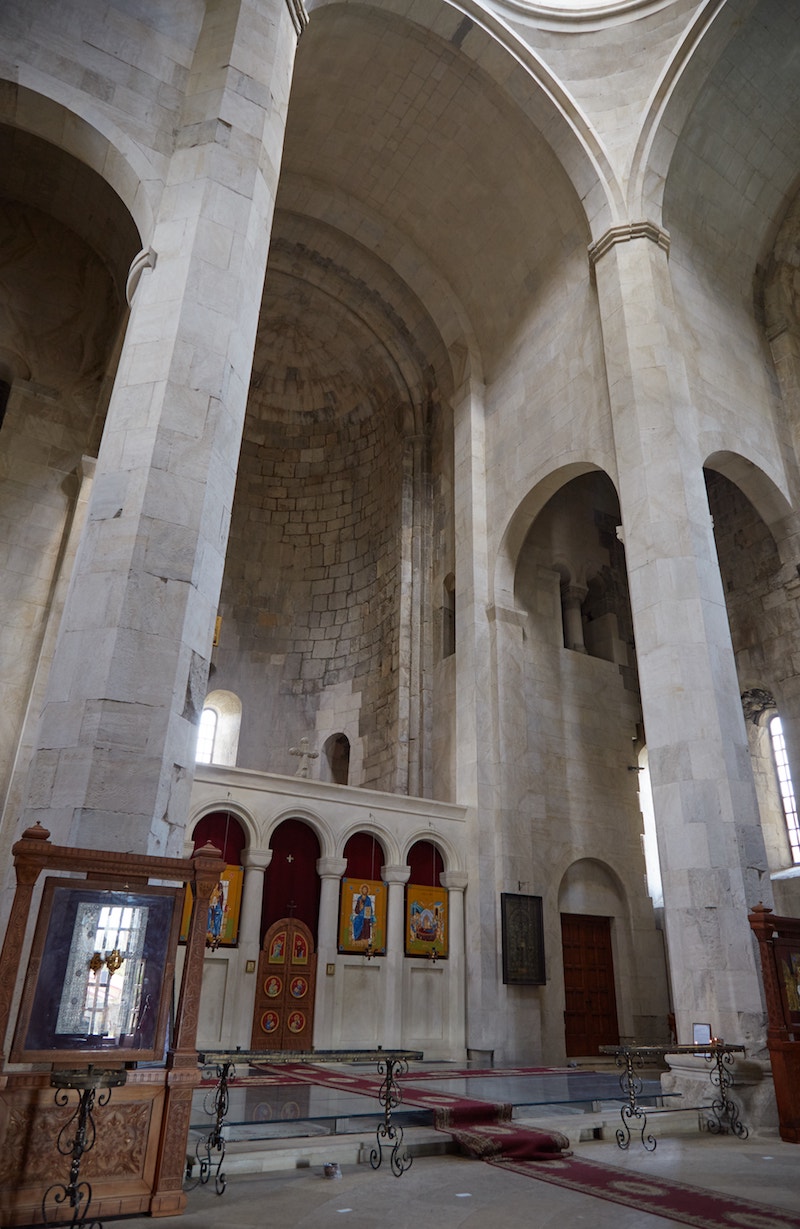

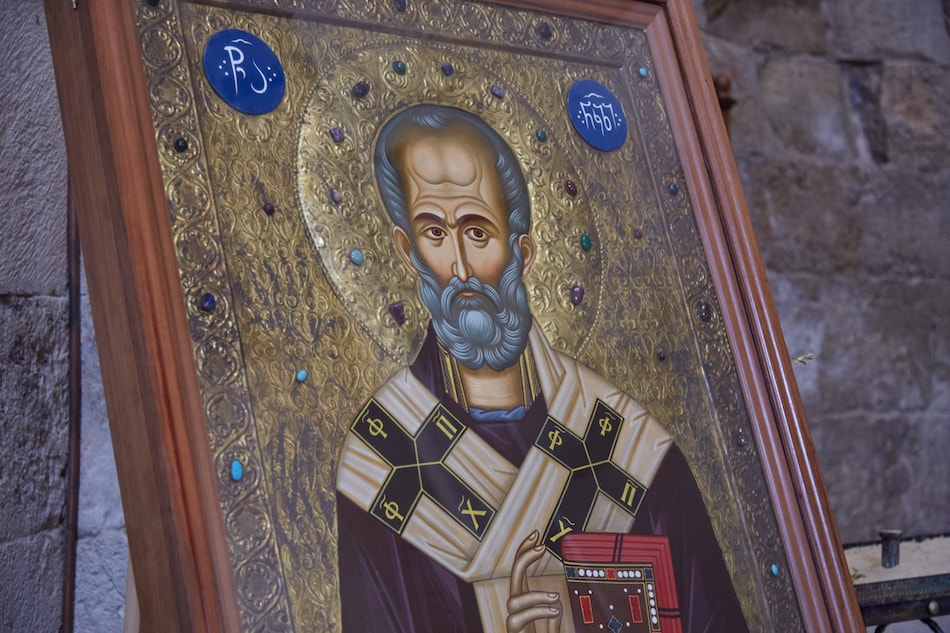
While the cathedral was originally destroyed by the Ottomans in the 17th century, it was later carefully restored in the 20th century – a long process which lasted from the 1950s – 90s.
The team’s efforts were so successful that Bagrati was even designated as a UNESCO World Heritage site in 1994. But only temporarily…


Due to further deterioration, the Georgian government called upon Italian architect Andrea Bruno to restore the church in the 2010s. But his so-called ‘restoration’ was such a disaster that it cost Bagrati its UNESCO World Heritage designation!
For whatever reason, Bruno decided to add metal and glass to the ancient structure, both inside and out. It’s an ugly, incongruous mix that remains wildly unpopular among historians and casual visitors alike.
For what its worth, Bruno also happens to be responsible for a building called ‘The Museum of Nothing’ in Cyprus.
Gelati Monastery
About 8 km northeast of town stands Gelati Monastery, one of the most famous in all of Georgia. Founded in 1106, Gelati is another medieval masterpiece. And unlike Bagrati, it’s held onto its World Heritage status.
The monastery was started by David the Builder, one of Georgia’s most legendary kings and who also happens to be buried here. It was ultimately finished by his son a few decades later.
Throughout Gelati’s illustrious history, it’s been home to many important scholars and theologians from all over the Orthodox world. Among them was Ioane Petritsi, a prominent Neoplatonist philosopher known in both Georgia and the Byzantine Empire.
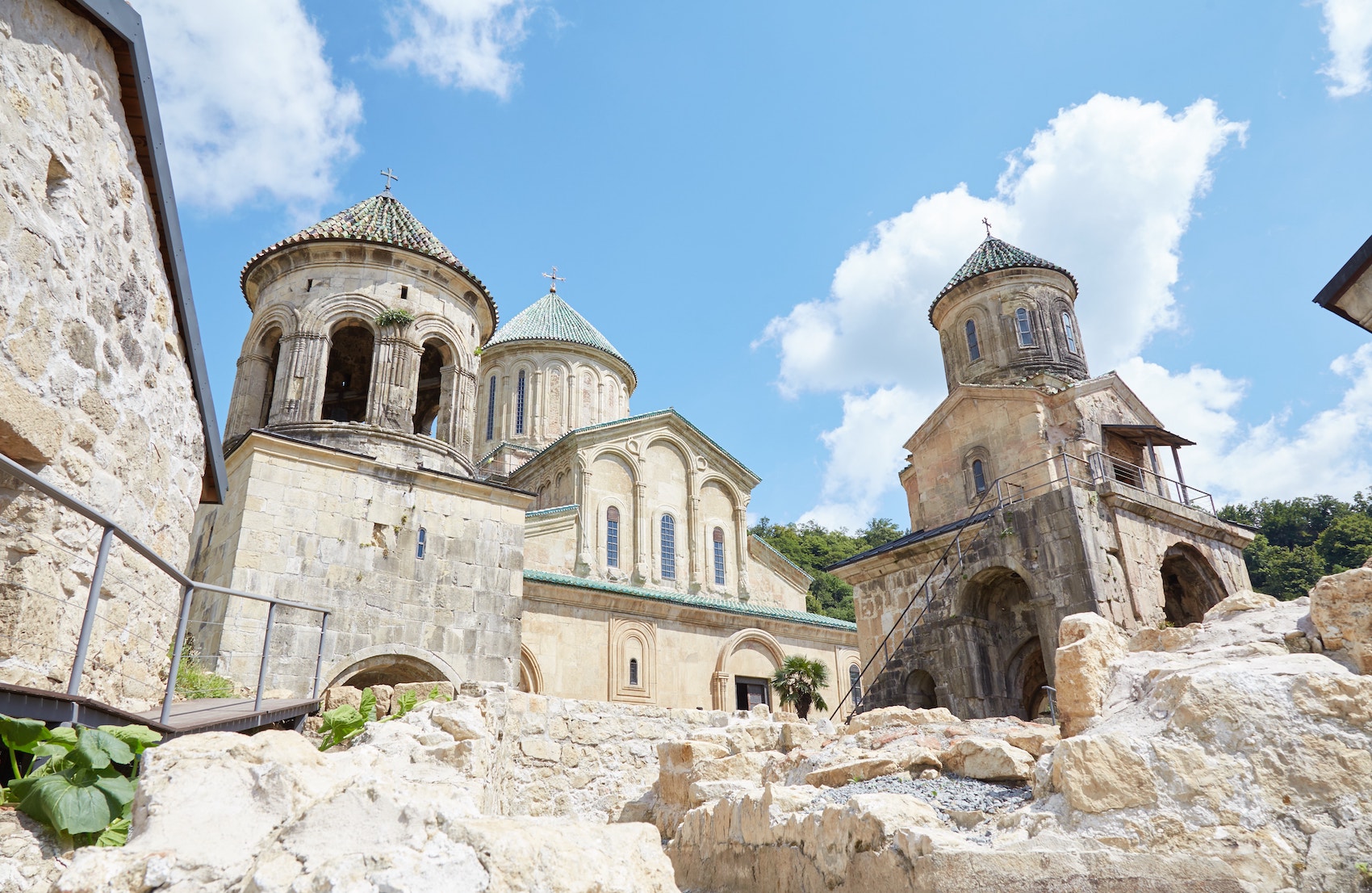


The main highlight of Gelati is its interior reliefs. The central structure, Cathedral of the Virgin, is entirely covered in well-preserved reliefs dating from the 12th-17th centuries. Both David the Builder and Bagrat III make appearances in the art.
The church also features mosaic art depicting many classic religious scenes.
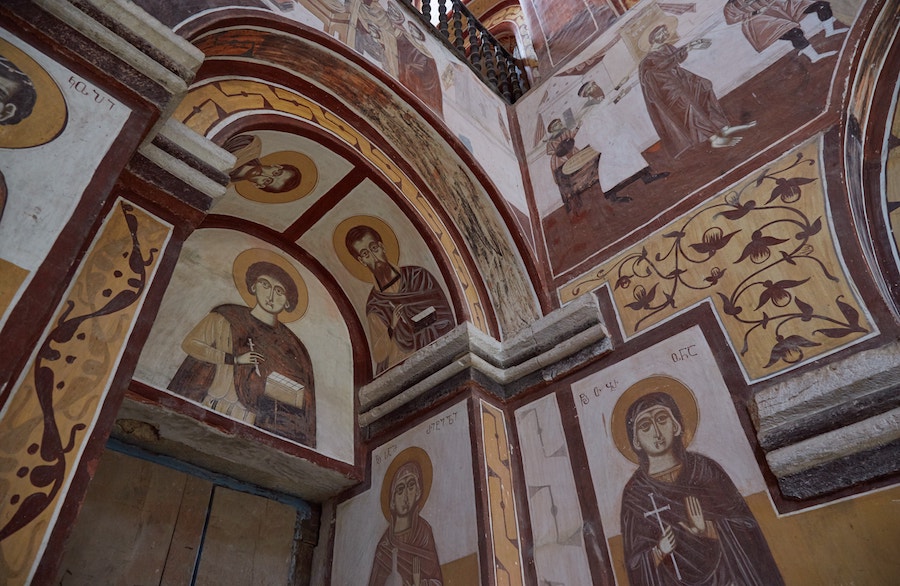


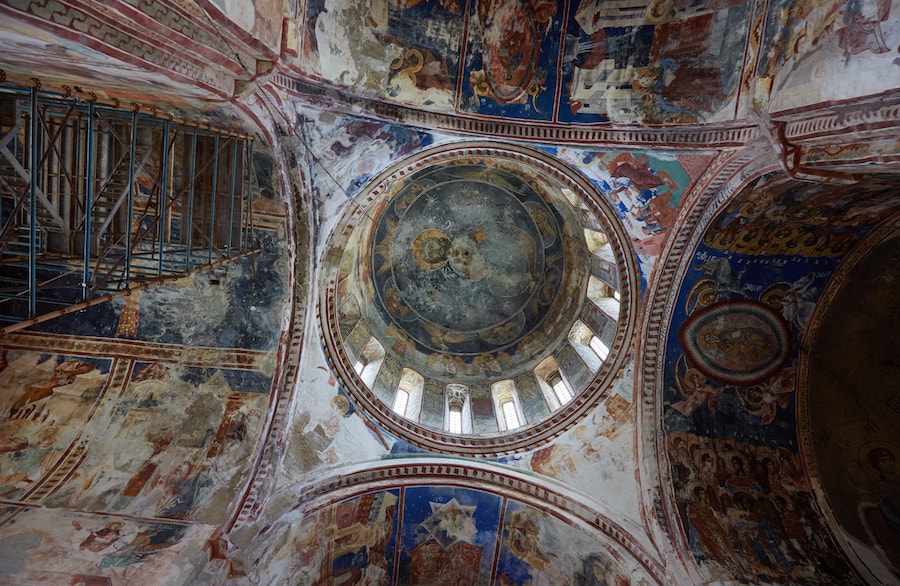

Closer to the entrance is the Church of St. George. While a much smaller structure, this building is also covered from top to bottom in vivid artwork.
There are several additional smaller structures scatted throughout the complex, and also be sure to take the opportunity to enjoy the views.
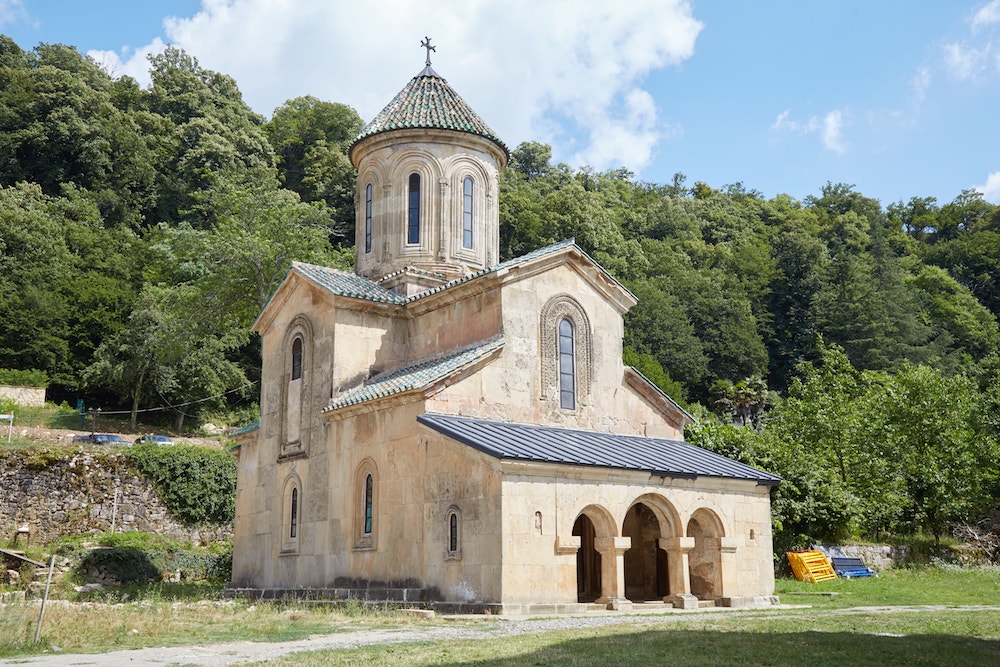

If you’re traveling independently, marshrutkas (minibuses) run here every couple of hours from behind the State Theatre. But see down below for info on an affordable private tour to Gelati and all of the other following sites in this Kutaisi guide.
Motsameta Monastery
Motsameta Monastery is lesser known than the two sites mentioned above. And it’s also a lot smaller. It is, however, worth visiting for its excellent mountaintop views.
The gorge that it overlooks is part of a tragic story. According to legend, two brothers were thrown into it after refusing to convert to Islam during the Arab invasions of the 8th century.
Their bodies were eventually recovered, though, and they’re now entombed within the monastery. In fact, the entire monastery itself is dedicated to them.




The monastery was originally founded in the 8th century, but the current church and bell tower were added by King Bagrat III (see above) in the 11th century. Thankfully, this monastery also lacks any modern ‘renovations.’
Note that it’s possible to hike the 5 km or so distance from Gelati to Motsameta. While I didn’t try it myself, it seems like a fun outing for independent travelers with more time in town.
Sataplia Cave
While the most well-known cave in the region is the Prometheus Cave (see below), Sataplia is also worthy of a visit. In addition to its cave, the site contains something you don’t encounter very often: dinosaur footprints.
While only discovered in 1993, the footprints themselves date back to around 120 million years ago. They were formed after the mud the creatures walked on got filled with sand, gradually hardening into solid rock over the ages.
All in all, the footprints are said to belong to 25 different dinosaurs of 7 different species. But the most distinguishable among them are those of a T-Rex and brontosaurus.



I was surprised by how small the T-Rex footprints were. But the guide (with whom it’s required to tour the site) told me that a lot of them were actually quite petite.
Outside are a series of several animatronic dinosaurs that are surprisingly well done. If you’re traveling with children, they’ll surely love it. They’re a level of quality you’d normally expect from a major theme park.

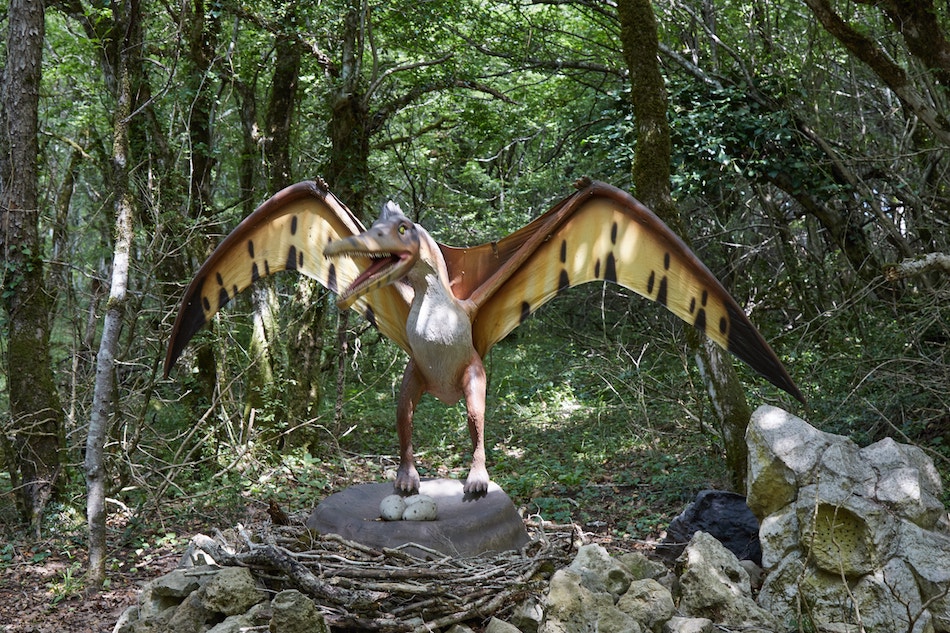
Past the dinosaurs and some scenic viewpoints of rural Kutaisi is Sataplia Cave. The 900-meter karst cave was formed by water erosion over the course of around 30 million years.
It’s a well-lit cave with many interesting formations. And at a constant temperature of 14 degrees C, the cool air is especially refreshing in summer. But if you’re visiting Prometheus Cave on the same day, the latter is going to end up leaving a stronger impression.


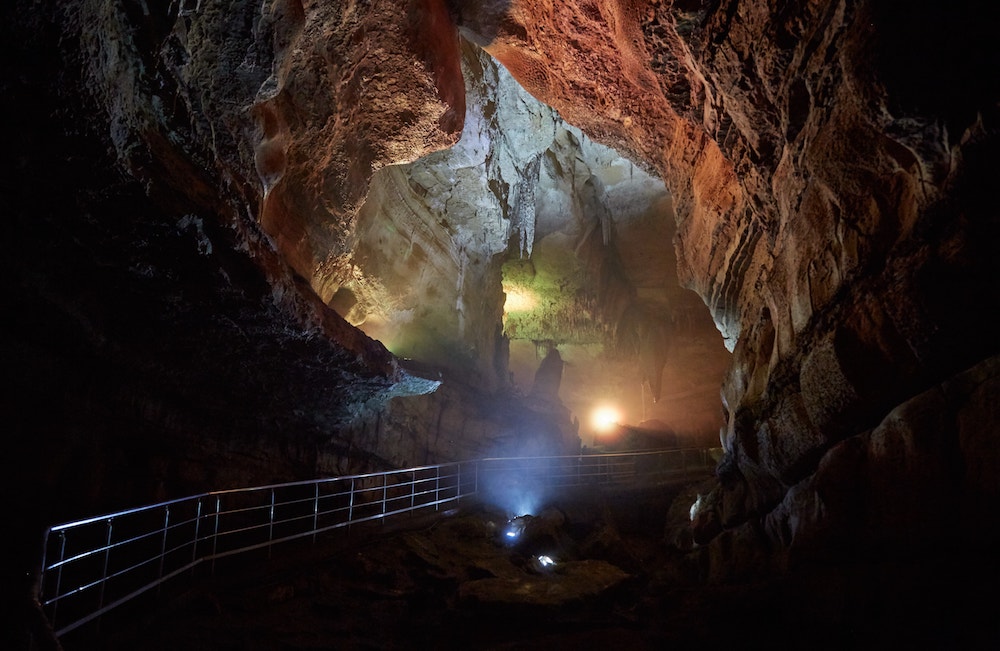
Beyond the cave, Sataplia even has a glass lookout platform, much like something you’d see in China. Not only is the floor transparent, but there’s absolutely nothing propping it up underneath! It’s definitely not meant for those with the slightest fear of heights.
Entry to Sataplia costs 15 GEL.

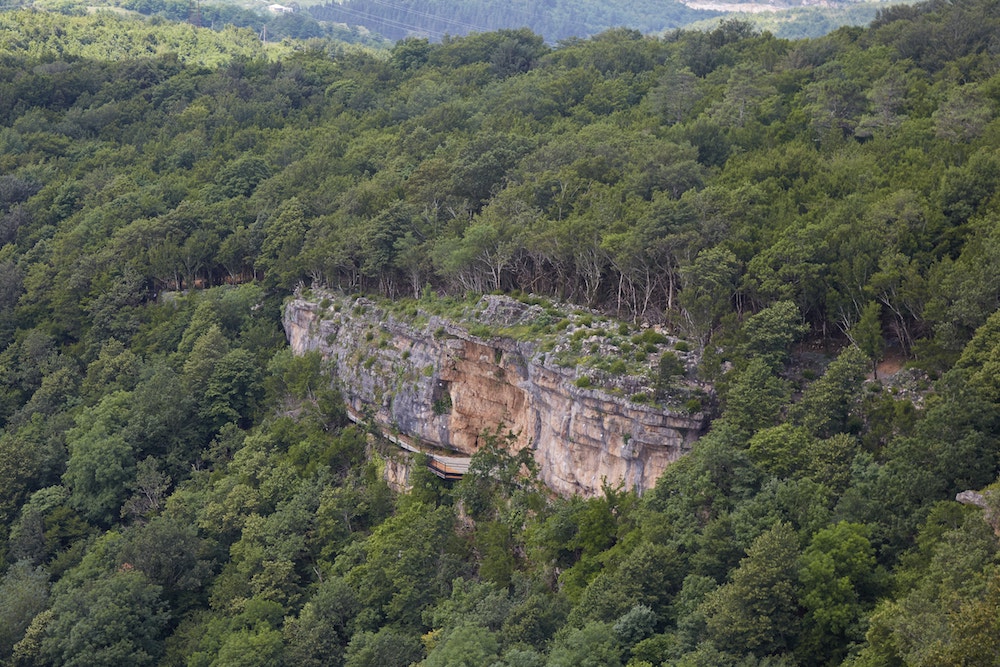
Prometheus Cave
Prometheus Cave is arguably Georgia’s best-known cave, and one of the Imereti region’s top tourist attractions. It’s named after the Greek Titan who stole fire from the gods in order to gift it to humanity. According to the legend, Zeus tied Prometheus up to a mountain in the Caucasus as punishment.
Every day, an eagle would come down to tear out his liver until he was finally liberated by Heracles. While the exact mountain is unknown, many believe it to be Mt. Kazbeg, north of Tbilisi. Others, however, argue that it’s Khvamli, not far from Kutaisi.



A local guide is required to tour the cave, and reviews online complain of being stuck together with huge groups. Fortunately for me, my group only consisted of myself, two women and their sons. And one of the women, who spoke good English, was kind enough to translate what the guide was saying in Georgian.
One of the most interesting bits of info I remember is that it can take hundreds of years for a stalactite to grow just one centimeter.
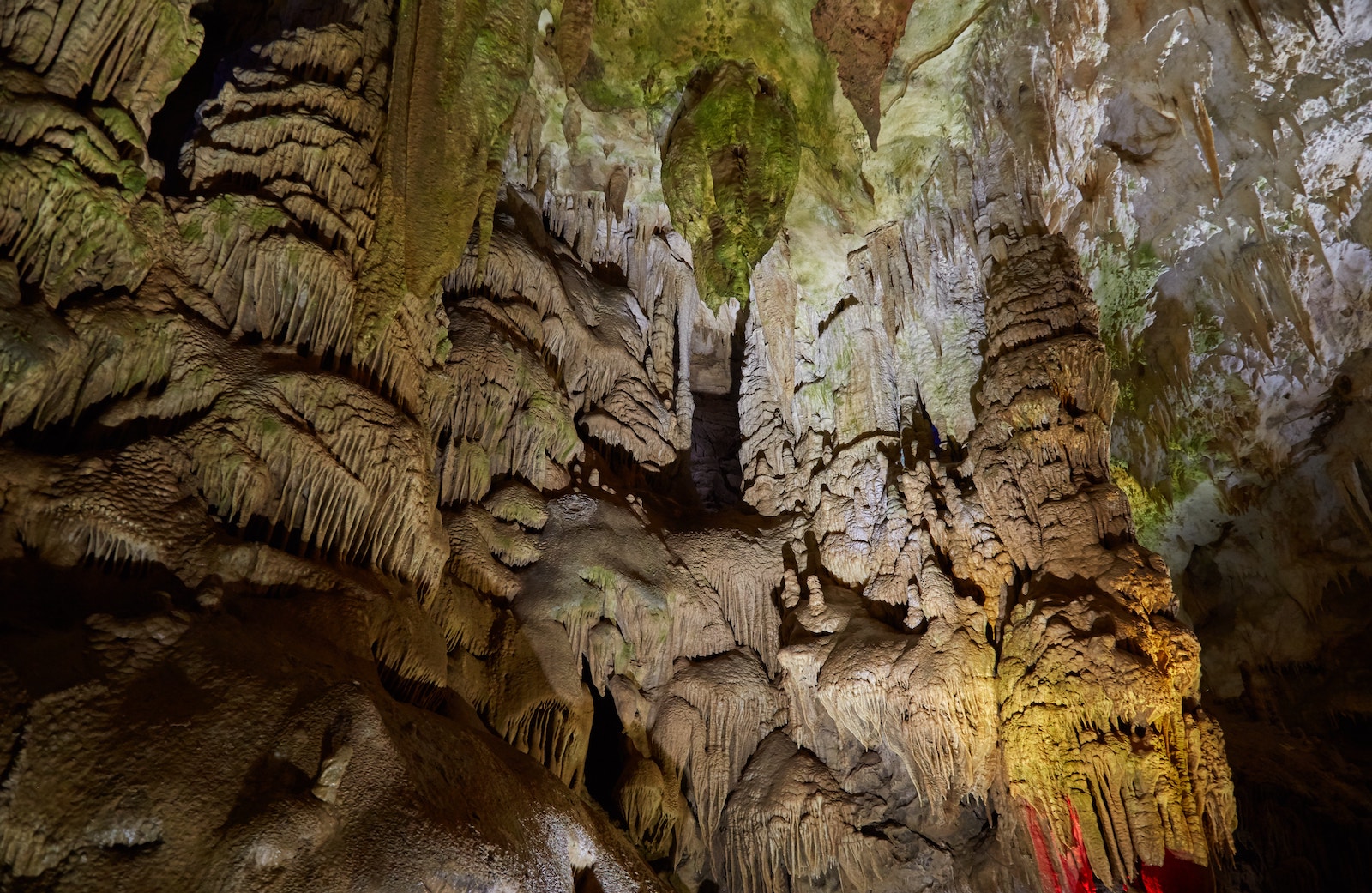
With so many different areas (six halls in total) and a diverse range of formations to see, I found the experience to be well worth it. But I might have a different opinion had I gone at a busier time.
While Prometheus may be the more impressive cave, Sataplia is the more interesting site overall given the range of things to see there.
Entry to Prometheus Cave costs 23 GEL.
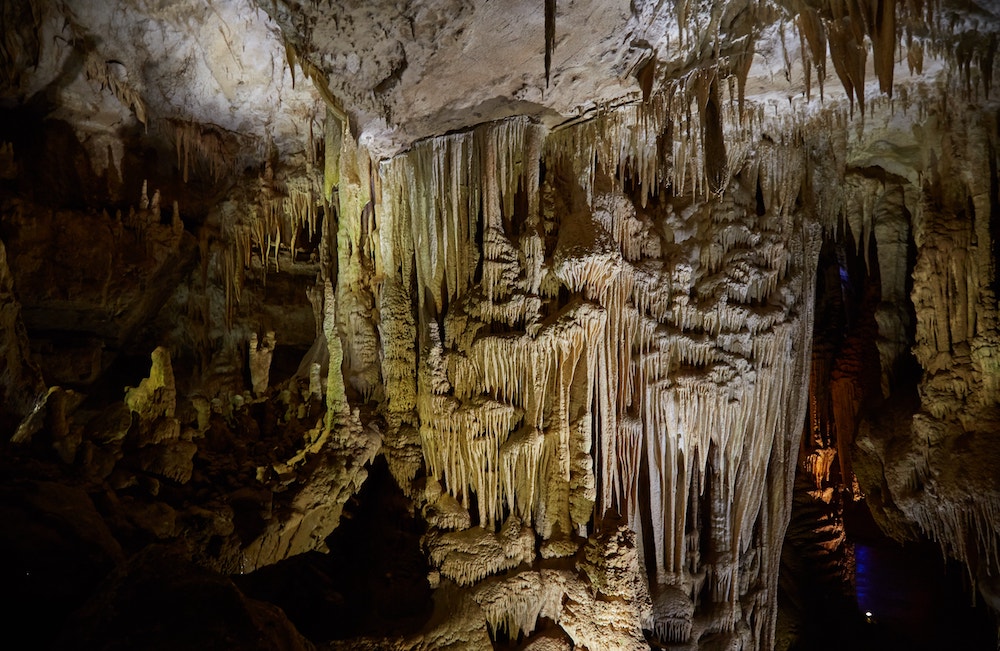
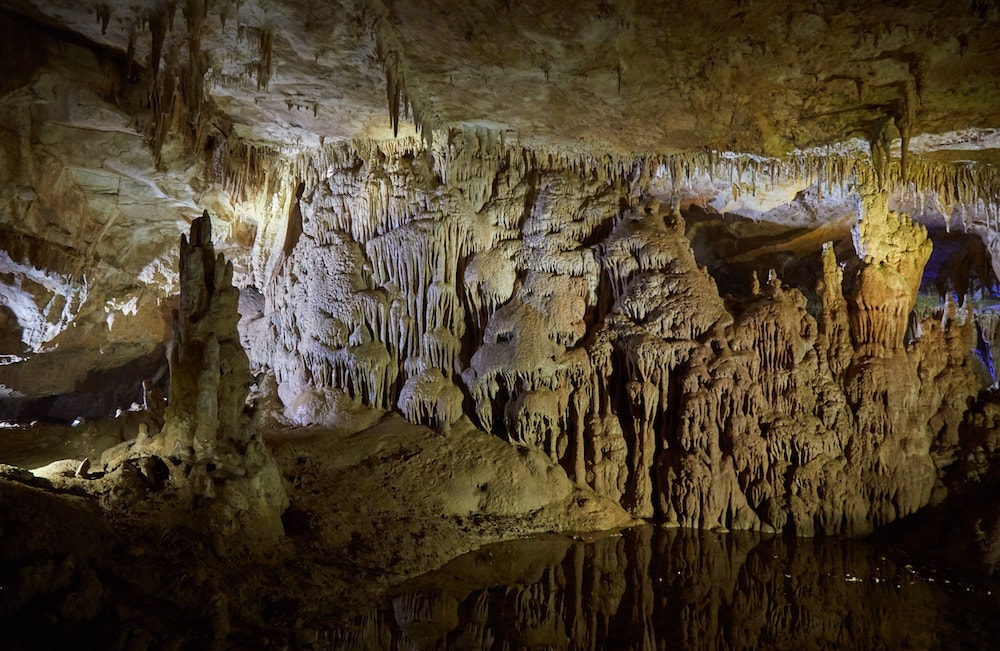
Additional Info
Kutaisi was chosen by budget airlines like Wizz Air to be Georgia’s main hotspot for European budget airlines. As such, many travelers from the EU start their Georgia trip in the city. Personally, I think Kutaisi makes for a better first impression of the country than overcrowded Tbilisi.
For those coming from elsewhere, you can easily find marshrutkas to Kutaisi at all times of day, as it’s one of the tiny nation’s prominent cities. I just showed up at Tbilisi’s Didube Bus Terminal and within a minute, I found a minivan that was just about to depart.
From Tbilisi, the journey is supposed to take around 3 hours. But mine took 4 due to some needlessly long breaks the driver took at rest areas.
From Batumi, the journey by marshrutka is just about 2 hours. Kutaisi is also connected to both Tbilisi and Batumi by rail. But with minivans leaving so frequently, they’re surely the more convenient option.
Central Kutaisi is easily accessible on foot. To get to the locations around the outskirts, such as the monasteries, caves and canyons, you’ll need some kind of vehicle.
On one of my days in the city I booked a private driver through Kutaisi Trip Station. He took me on a long day tour to Sataplia Cave, Prometheus Cave, Gelati Monastery, Motsameta Monastery and finally Bagrati Cathedral. It only cost $26.50 USD, excluding the entry fee for the caves. No meal was provided either.
This was a full day, but if you have more time to spend in the region, many people also visit Imereti’s canyons, such as Martvili and Okatse. The same company also offers a Canyons Tour, but you can visit some of them on your own with a marshrutka.
While the canyons sounded interesting, I opted for two day trips elsewhere: the abandoned spa town of Tskaltubo and the scenic mining town of Chiatura.
The city of Kutaisi has two main areas: the very central area around the Colchis Fountain and Kutaisi Park, and the quieter hilly area just across the Rioni River to the west. The two districts are pretty easily walkable from one another, so I chose to stay in the western part of town.
My booking was for Guest House TasuNia, but the same family also owns Hotel Argo Palace just next door. Being one of the only guests there due to the coronavirus pandemic, they kindly offered me a larger single room at Argo Palace for just a small extra fee.
Breakfast wasn’t included, but it cost around 10 GEL for a huge amount of food. (I’m not a big fan of Georgian food in general, but it sure is filling.)
It’s also worth noting that this hotel and general area is a very easy walk to the buses that leave for Tskaltubo just by the Red Bridge.

Pin It!

[…] JAME: Colchis […]